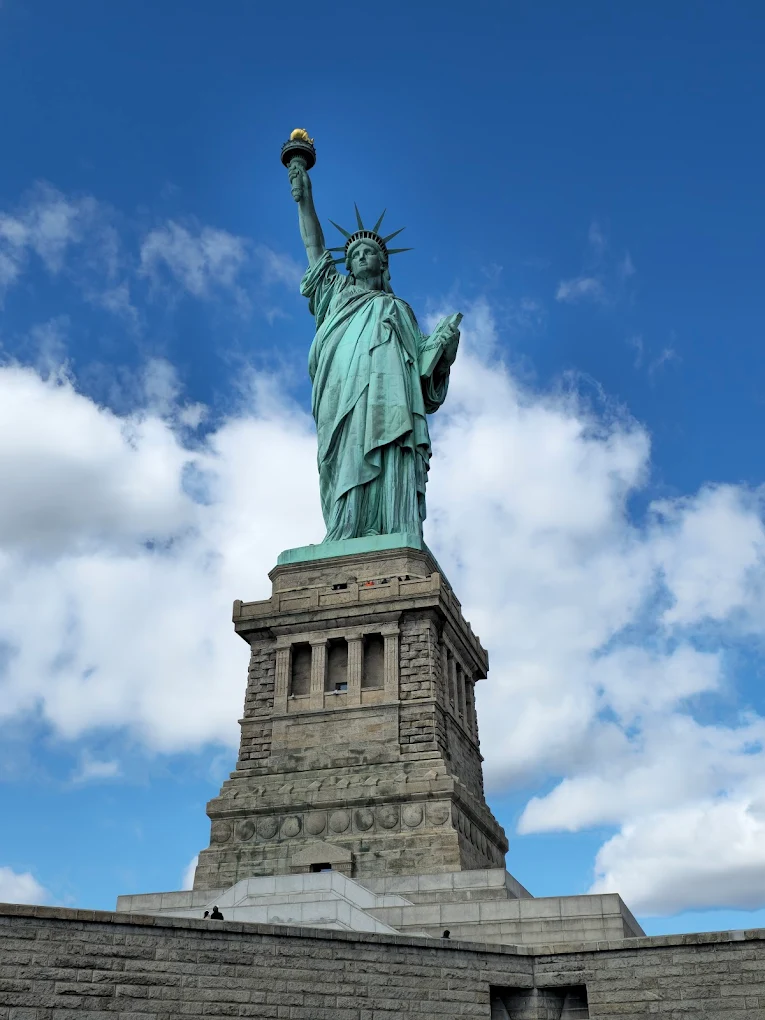More than just a colossal statue standing proudly in New York Harbor, lady liberty is a powerful symbol of freedom, democracy, and hope. Her story is etched not only in copper and iron but also in the ambitious fundraising efforts, ingenious engineering, and transatlantic cooperation that brought her to life. While millions have marveled at her torch and crown, the journey of her creation is a testament to human collaboration and determination against significant odds.
The Vision Behind “lady liberty”: A Gift of Friendship
The concept of “lady liberty” originated from a desire to commemorate the alliance between France and the United States during the American Revolution and to celebrate the abolition of slavery. French historian Édouard de Laboulaye proposed the idea in 1865, envisioning a grand monument that would embody the ideals of liberty. This vision was embraced by sculptor Frédéric Auguste Bartholdi, who dedicated years of his life to designing and building this unprecedented work of art. The plan was ambitious: France would fund and construct the statue itself, while the United States would be responsible for the pedestal upon which she would stand.

A Symbol of Friendship Across the Atlantic
The decision for France to gift such a monumental sculpture to the United States was a profound gesture. It solidified the historical bonds between the two nations and served as a beacon for shared values of liberty and republicanism. Bartholdi saw the project not just as a commission but as a labor of love, traveling to the United States to scout potential locations and garner support for the ambitious undertaking. He chose Bedloe’s Island (now Liberty Island) as the ideal spot, strategically located at the gateway to America, where immigrants arriving by sea would see her first.
Bartholdi’s Grand Design Takes Shape
Bartholdi’s design was meticulous and filled with symbolism. From the seven rays of her crown representing the seven seas and continents to the tablet inscribed with the date of the American Declaration of Independence (July 4, 1776), every element was carefully considered. The flowing robes, the broken chains at her feet, and the uplifted torch all conveyed powerful messages of liberation and enlightenment. Crafting such a massive copper figure required incredible skill and foresight, posing unique challenges that would demand innovative solutions.
Funding the Dream: A Transatlantic Effort for “lady liberty”
Bringing Bartholdi’s grand vision to reality required significant financial resources, and fundraising became an integral part of lady liberty‘s history from the very beginning. Both France and the United States launched public campaigns, relying on the generosity of ordinary citizens and wealthy patrons alike.
French Fundraising Endeavors
In France, the campaign to fund the statue itself involved a variety of creative methods. Public fees were levied, and numerous forms of entertainment, including theatrical performances, concerts, and banquets, were organized to collect donations. Perhaps one of the most popular methods was a lottery, offering prizes to encourage participation and raise funds for the colossal project. These efforts successfully gathered the necessary millions of francs needed to construct the statue in Paris.
The American Pedestal Challenge
Across the ocean, the United States faced its own challenge: funding and building the massive pedestal that would support lady liberty. This proved to be more difficult than anticipated. Early fundraising efforts in the U.S. included benefit theatrical events, art exhibitions showcasing works inspired by the statue, auctions of donated goods, and even prizefights. Despite these varied activities, progress was slow, and the project risked stalling due to lack of funds for the base.
Pulitzer’s Call to Action and the People’s Response
Facing a critical funding gap for the pedestal in 1885, the prominent newspaper publisher Joseph Pulitzer took a bold step. He used the power of his widely read newspaper, the New York World, to launch a public appeal. Pulitzer’s strategy was simple yet effective: he published an ad inviting readers, no matter how small their contribution, to donate to the pedestal fund. In a brilliant move to encourage participation and recognize donors, he promised to print the name of every single person who contributed in his newspaper.
This public appeal struck a chord with the American people. The response was overwhelming. Ordinary citizens, including children, sent in pennies, nickels, and dimes. The campaign galvanized the nation, demonstrating a widespread desire to see lady liberty completed. Over a period of just five months, approximately 120,000 people donated more than $100,000 (a significant sum at the time), securing the remaining funds needed to finish the pedestal. This grassroots effort remains a powerful symbol of how public will can achieve monumental goals.
Emma Lazarus and The New Colossus
During the American fundraising efforts, poet Emma Lazarus was asked to contribute a work for an art and literary auction held to benefit the pedestal fund in 1883. While initially hesitant, she was moved by the plight of immigrants arriving in New York. Her sonnet, The New Colossus, penned for this auction, offered a new and enduring interpretation of lady liberty.
Instead of solely representing the alliance between France and America, Lazarus’s poem depicted her as a welcoming figure for immigrants and refugees seeking a new life and freedom. Her famous lines, “Give me your tired, your poor, Your huddled masses yearning to breathe free,” were later inscribed on a plaque placed inside the pedestal in 1903, forever linking the statue to its role as a symbol of immigration.
Engineering “lady liberty”: Gustave Eiffel’s Mastery
Building a colossal copper statue presented immense structural challenges. The thin copper skin needed support, but also the ability to flex and move slightly under wind and temperature changes without cracking. Bartholdi realized he needed the expertise of a structural engineer.
The Need for Structural Innovation
The sheer scale of the statue, standing over 151 feet tall (46 meters) on its own, meant that traditional construction methods wouldn’t suffice. The internal structure had to be robust enough to support the weight of the copper sheeting (which, though thin, collectively weighed 31 tons) and withstand the harsh weather conditions of New York Harbor, including strong winds. It also needed a way to connect the copper exterior to the internal framework while allowing for thermal expansion and contraction.

Eiffel’s Revolutionary Skeletal System
Alexandre Gustave Eiffel, the renowned engineer who would later design the iconic Eiffel Tower, was commissioned to solve this complex structural puzzle. Eiffel devised an ingenious plan: a massive central pylon made of iron, acting as the statue’s spine, from which a secondary skeletal framework of iron ribs extended. This framework was designed using the principle of a flexible curtain wall, allowing the copper skin to hang independently and move slightly without putting direct stress on the rigid internal structure. This revolutionary design was crucial for the statue’s longevity and stability.
The Copper Skin and Iron Frame Interaction
Eiffel’s design used thin copper sheets (only 2.4 mm thick) hammered into shape and attached to the iron framework using copper straps and flexible iron bars. This system allowed the copper to expand and contract with temperature changes independently of the iron structure. The pylon and secondary frame provided the necessary support, while the flexible connections ensured the copper “skin” wouldn’t buckle or crack. It was a marvel of 19th-century engineering, ensuring lady liberty could withstand the elements for centuries.
Building and Crossing the Atlantic
With the design finalized and fundraising progressing on both sides of the ocean, the work of constructing lady liberty began.
What to Eat in Fort Worth – A Culinary Deep Dive
11 Must-Visit places to go in nevada for Your 2025 Trip
12 Unforgettable Fun Things to Do in Vegas for Couples
Construction in Paris
The statue was meticulously built in sections at the Gaget, Gauthier & Co. workshops in Paris. Craftsmen worked on the individual copper plates, hammering them into shape using wooden molds. As sections were completed, they were assembled piece by piece outside the workshop, gradually rising above the Parisian skyline. By July 1884, the complete statue stood tall in Paris, a temporary landmark before its journey.
Dismantling and Voyage
Once completed, lady liberty had to be carefully disassembled for her transatlantic voyage. She was taken apart into 350 individual pieces, packed into 214 crates, and loaded onto the French frigate Isère. The ship sailed from France in May 1885, arriving in New York Harbor in June. The arrival of the crates was met with great excitement and anticipation in the city.

Designing and Building the Pedestal
While the statue was being built and shipped, construction of the pedestal on Bedloe’s Island was also underway. Renowned American architect Richard Morris Hunt was selected to design the pedestal, a granite structure rising from within the walls of Fort Wood, a star-shaped fort already existing on the island. Hunt’s design complemented the statue’s classical style, providing a strong, dignified base. The construction of the pedestal itself was a significant engineering feat, built with concrete and granite, delayed primarily by the fundraising challenges.
Reassembly and Dedication
Upon arrival in New York, the pieces of lady liberty were stored while the final stages of the pedestal’s construction were completed, thanks to the success of Pulitzer’s campaign.
Reconstructing “lady liberty” on Liberty Island
Once the pedestal was ready, the intricate process of reassembling the statue began. The iron framework was erected first, followed by carefully attaching the copper sections piece by piece, starting from the bottom and working upwards. The reassembly took several months, transforming the bare island into the home of the emerging icon.
The Unveiling Ceremony
The Statue of Liberty was officially dedicated on October 28, 1886, in a grand ceremony presided over by President Grover Cleveland. It was a major public event, attended by thousands, including French and American dignitaries. A naval parade took place in the harbor, and a ticker-tape parade celebrated the event in Manhattan. Bartholdi himself was present and pulled the cord to unveil lady liberty‘s face, hidden until that moment by a French flag. The dedication marked the successful culmination of years of planning, fundraising, design, and construction.
“lady liberty”: An Enduring Symbol
From a grand gesture of international friendship to a symbol of welcome for immigrants and a global icon of freedom, the meaning of lady liberty has evolved over time. Her creation story, marked by transatlantic cooperation, public participation, and engineering innovation, is as compelling as her physical presence. She stands today not only as a monument to the ideals of liberty but also as a reminder of what can be achieved when people unite for a shared purpose.
The next time you see an image of lady liberty or, if you are fortunate enough, stand before her in person, take a moment to reflect on the incredible journey that brought this enduring symbol to her place overlooking the harbor – a testament to vision, perseverance, and the collective spirit of two nations and their people.
